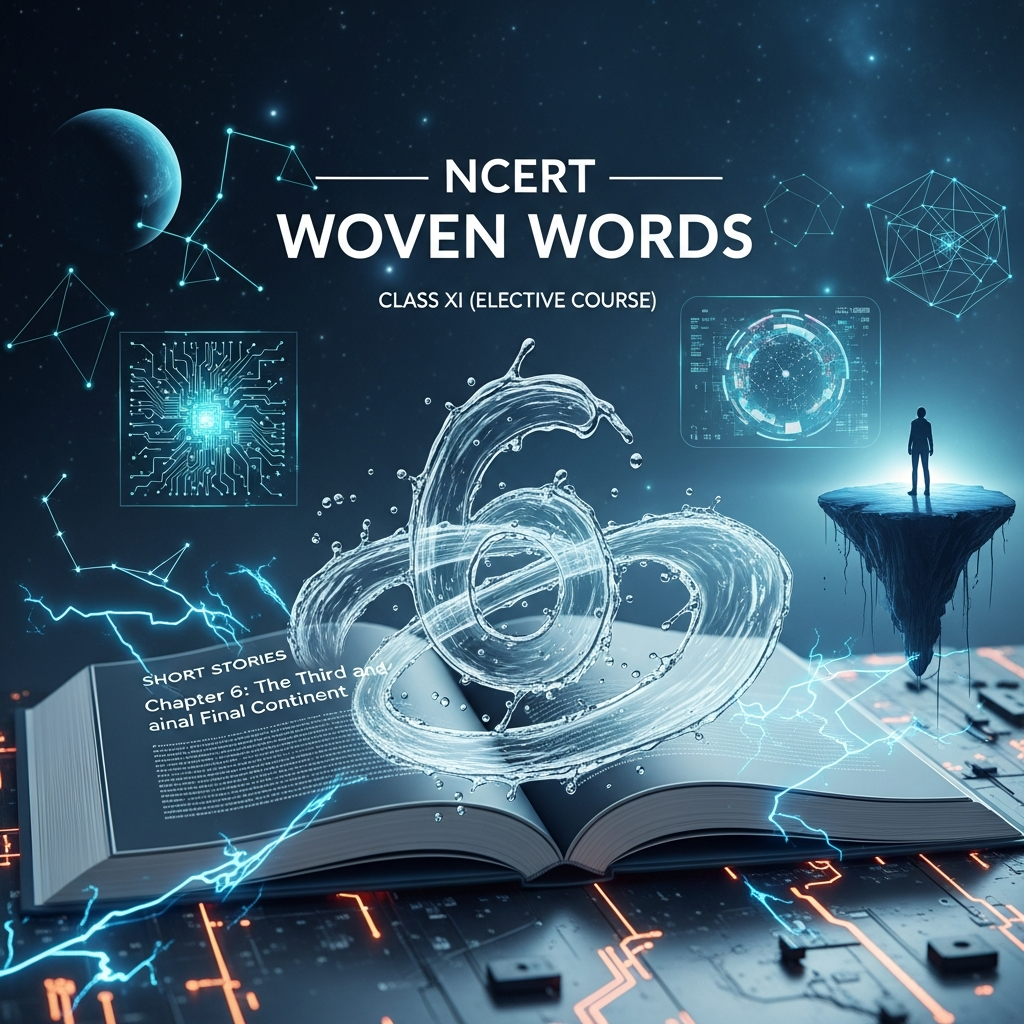All Articles on page 5
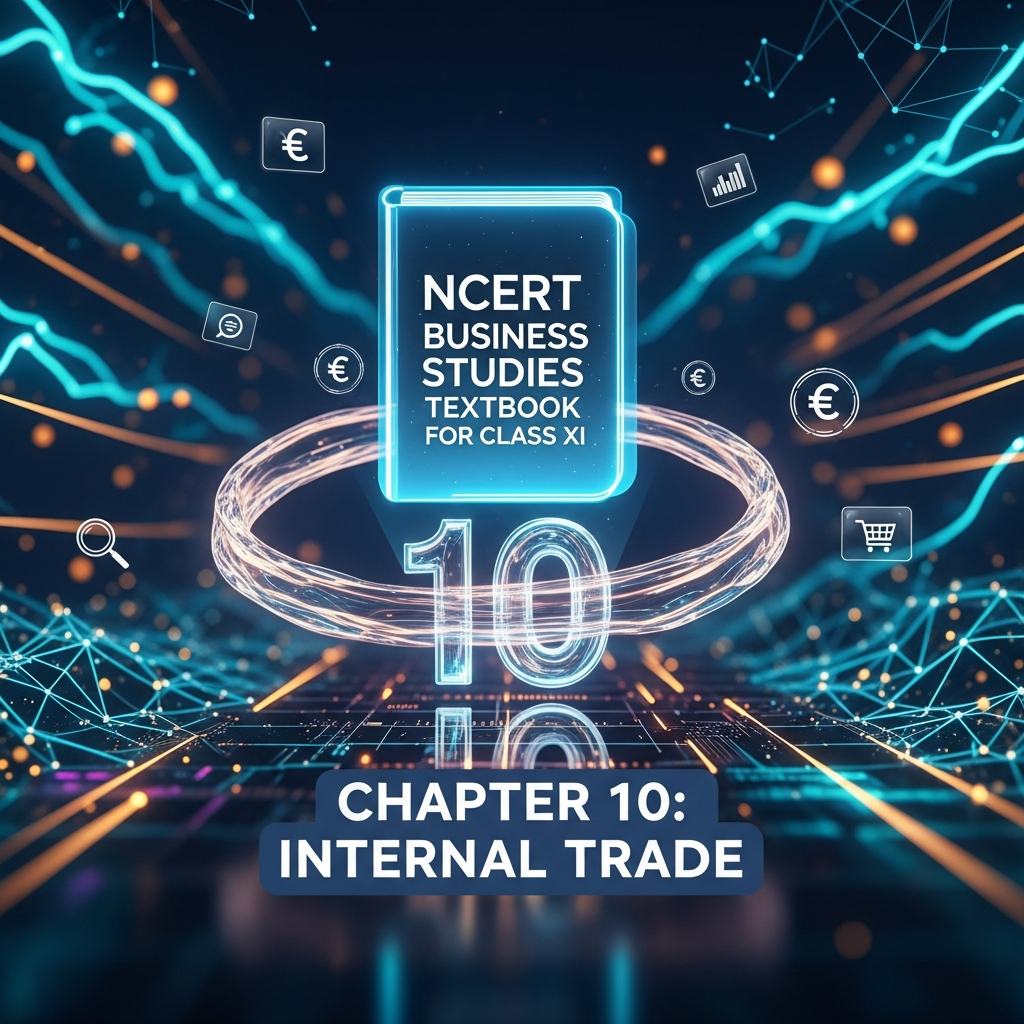
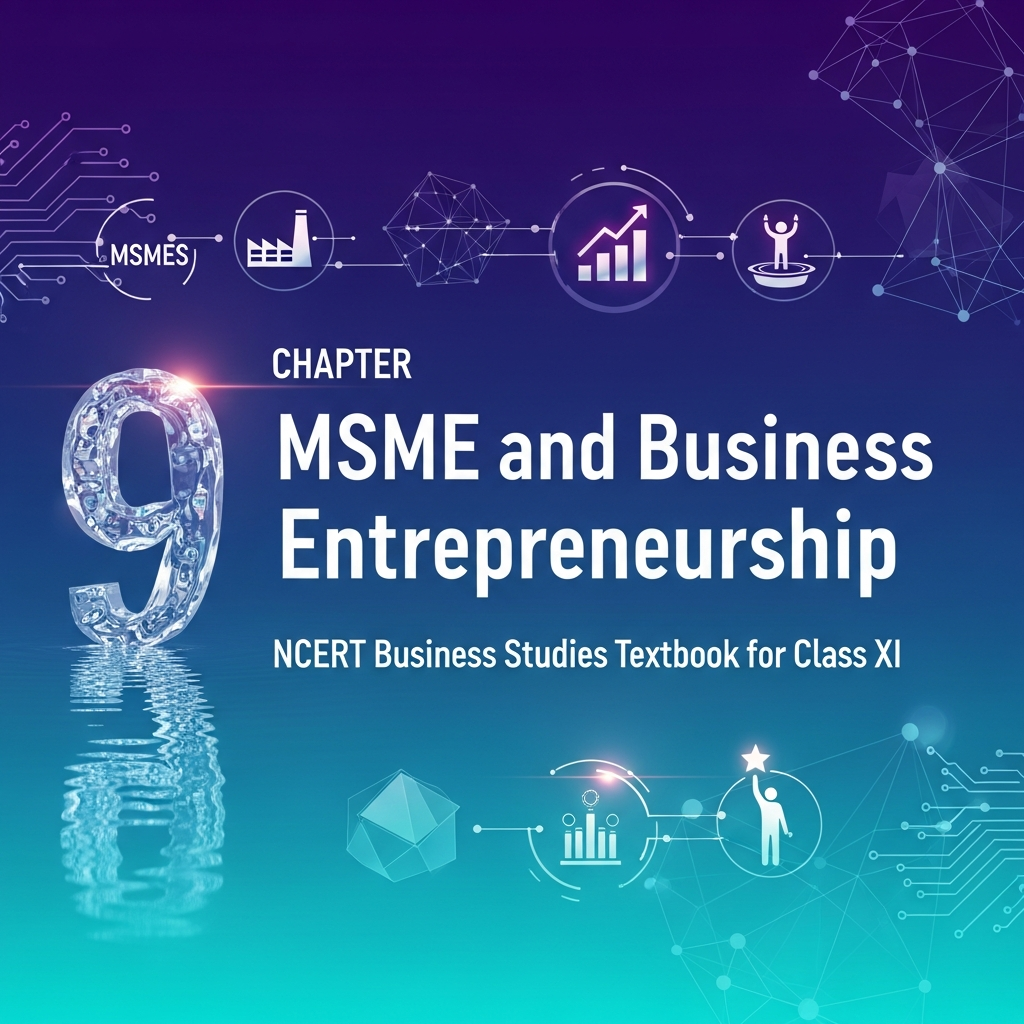
Complete Summary and Solutions for MSME and Business Entrepreneurship – NCERT Class XI Business Studies, Chapter 9 – Explanation, Questions, Answers
Comprehensive summary and explanation of Chapter 9 'MSME and Business Entrepreneurship' from the Class XI Business Studies textbook, covering the meaning, role, and significance of Micro, Small and Medium Enterprises (MSME) in India; the industrial subgroups within MSME; contributions of MSME to economic growth and exports; challenges faced by MSME including finance, raw materials, managerial skills, marketing, quality, capacity utilisation, and global competition; the nature and characteristics of entrepreneurship; types and importance of Intellectual Property Rights (IPR) like copyright, trademarks, geographical indications, patents, designs, plant varieties, and integrated circuit layout designs; and government initiatives like the Startup India Scheme—all supported with NCERT questions, answers, exercises, and projects.
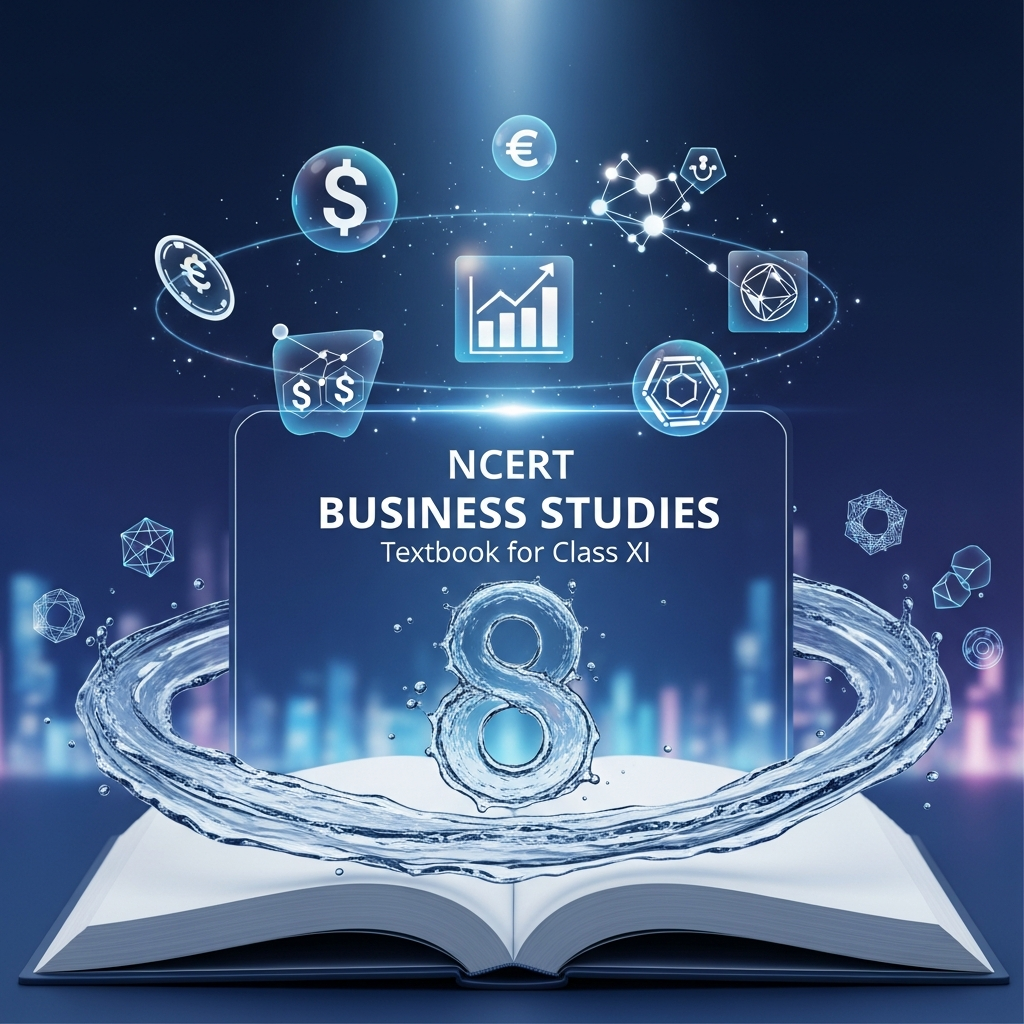
Complete Summary and Solutions for Sources of Business Finance – NCERT Class XI Business Studies, Chapter 8 – Explanation, Questions, Answers
Comprehensive summary and explanation of Chapter 8 'Sources of Business Finance' from the Class XI Business Studies textbook, covering the meaning, nature, and importance of business finance; classification of sources of funds by period, ownership, and source of generation; detailed description, merits, and limitations of various sources including retained earnings, trade credit, factoring, lease financing, public deposits, commercial paper, shares (equity and preference), debentures, loans from banks and financial institutions, and international financing; factors affecting the choice of source of funds; and practical exercises, projects, and assignments.

Complete Summary and Solutions for Formation of a Company – NCERT Class XI Business Studies, Chapter 7 – Explanation, Questions, Answers
Comprehensive summary and explanation of Chapter 7 'Formation of a Company' from the Class XI Business Studies textbook, detailing the stages of company formation including promotion, incorporation, and capital subscription; roles and functions of promoters; necessary legal documents such as Memorandum of Association and Articles of Association; importance of the Certificate of Incorporation; procedures for raising capital; and relevant legal provisions, with all NCERT questions, answers, exercises, and project assignments.
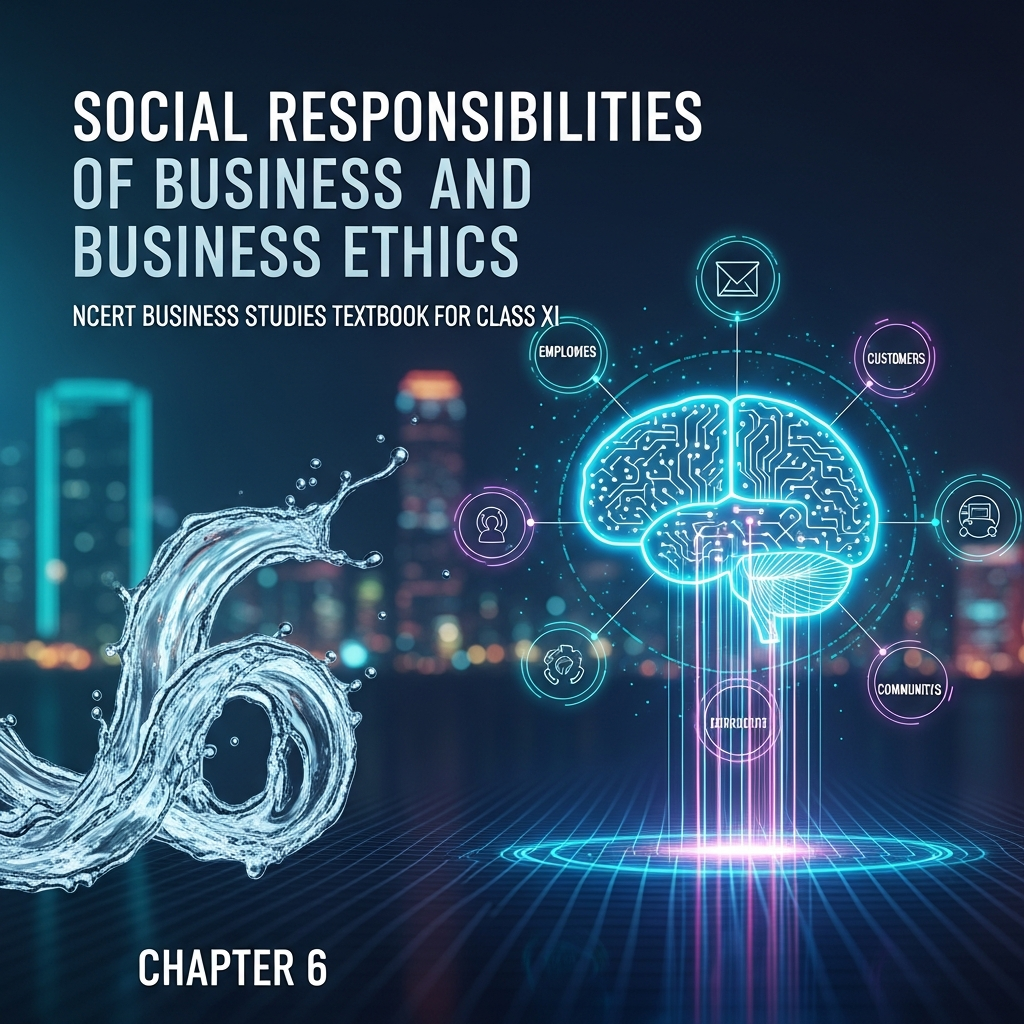
Complete Summary and Solutions for Business, Trade and Commerce – NCERT Class XI Business Studies, Chapter 6 – Explanation, Questions, Answers
Detailed summary and explanation of Chapter 6 'Business, Trade and Commerce' from the Class XI Business Studies textbook, covering the concept and types of trade, evolving modes of business, international trade, recent trends in e-commerce and digital trade, and the role of technological innovations like e-banking and digital payments, along with all NCERT questions, answers, exercises, and project work.
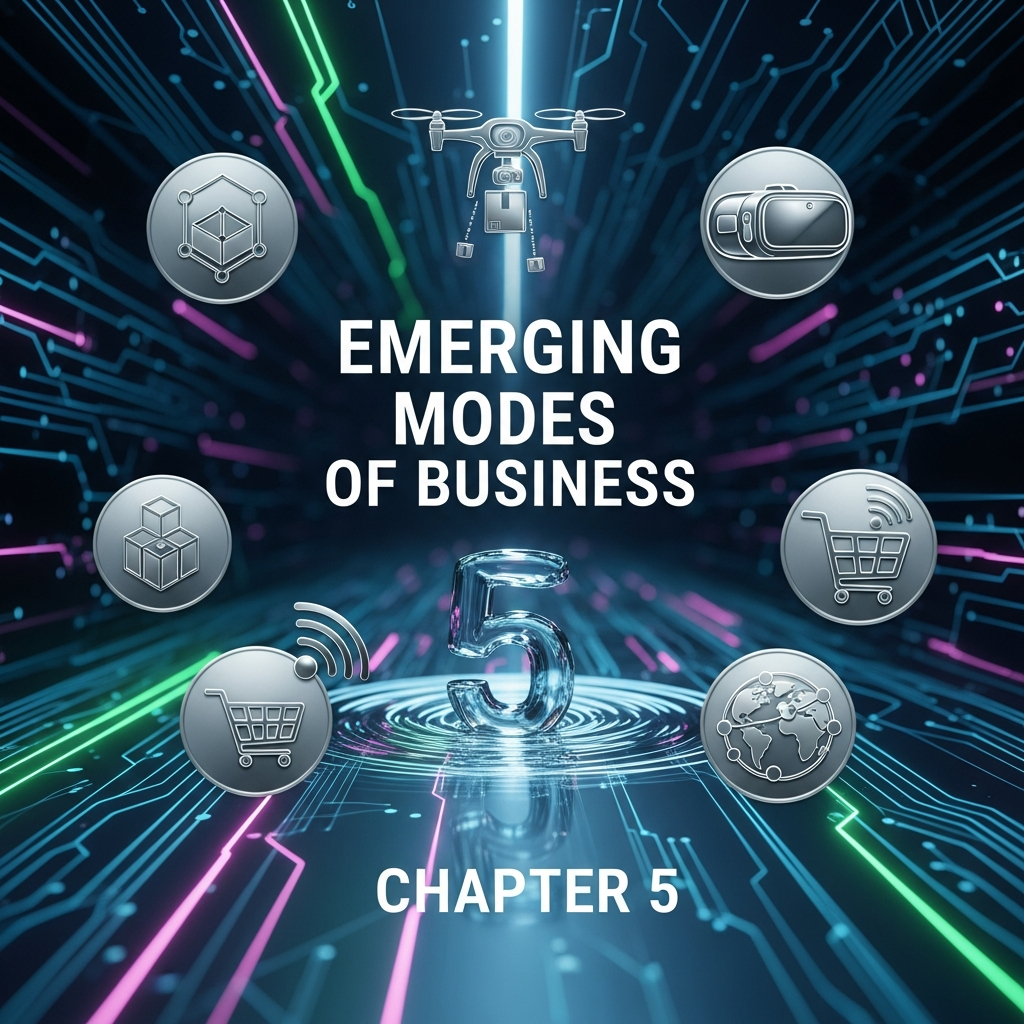
Complete Summary and Solutions for Emerging Modes of Business – NCERT Class XI Business Studies, Chapter 5 – Explanation, Questions, Answers
Comprehensive summary and explanation of Chapter 5 'Emerging Modes of Business' from the Class XI Business Studies textbook, covering the advent of e-business and business process outsourcing (BPO), distinctions between e-business and traditional business, scope of e-business, types of electronic commerce (B2B, B2C, C2C, intra-B), benefits and limitations of e-business, online transactions process, security and risk concerns, resources required for e-business implementation, relevant laws like the Information Technology Act 2000, and practical examples with NCERT questions, answers, exercises, and project assignments.

Complete Summary and Solutions for Business Services – NCERT Class XI Business Studies, Chapter 4 – Explanation, Questions, Answers
Comprehensive summary and explanation of Chapter 4 'Business Services' from the Class XI Business Studies textbook, covering the nature and types of services including business, social, and personal services; detailed discussion on banking and e-banking, insurance and its types, communication services including postal and telecom services, transportation, warehousing, and social security schemes—with all NCERT questions, answers, exercises, and projects.
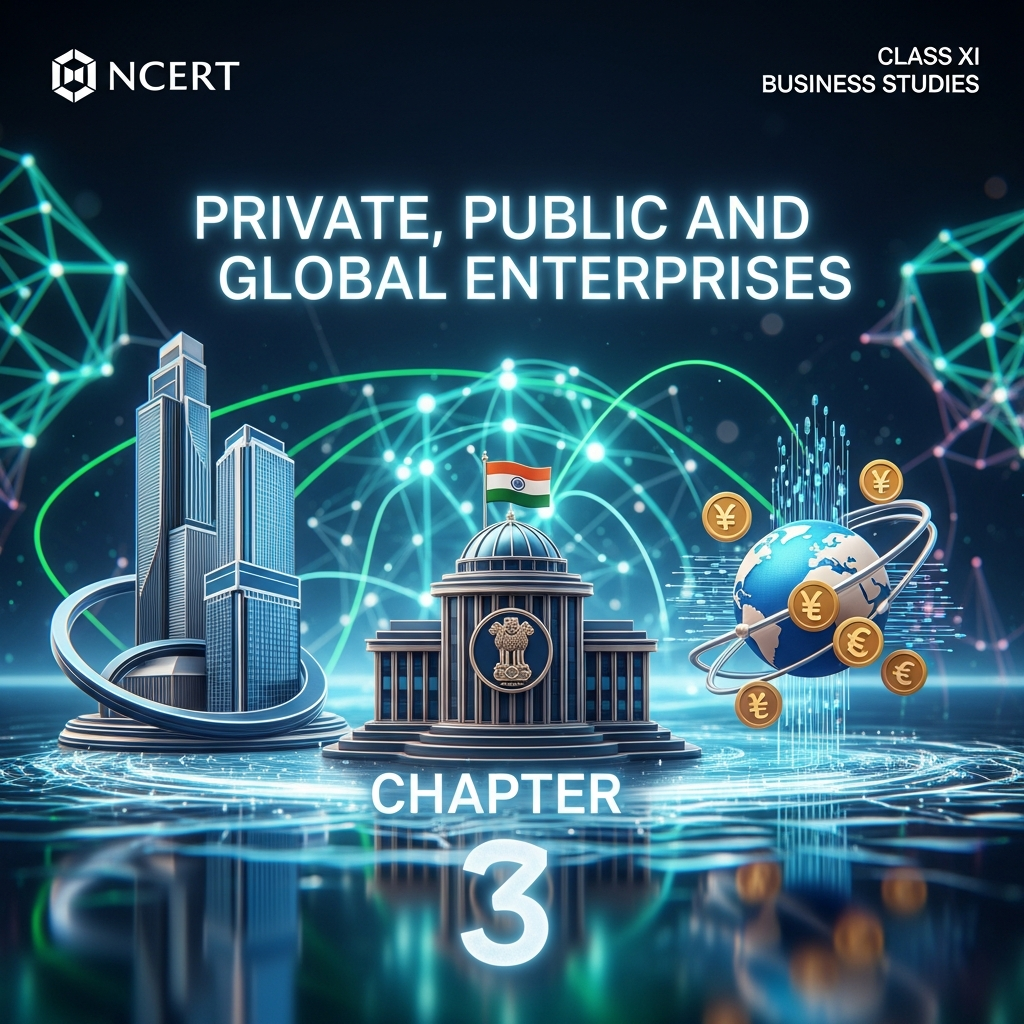
Complete Summary and Solutions for Private, Public and Global Enterprises – NCERT Class XI Business Studies, Chapter 3 – Explanation, Questions, Answers
Comprehensive summary and explanation of Chapter 3 'Private, Public and Global Enterprises' from the Class XI Business Studies textbook, covering private and public sectors, forms of organising public enterprises, changing roles of the public sector post-1991 reforms, global enterprises characteristics, joint ventures, public-private partnerships (PPP), and related NCERT questions, answers, projects, and exercises.

Complete Summary and Solutions for Forms of Business Organisation – NCERT Class XI Business Studies, Chapter 2 – Explanation, Questions, Answers
Comprehensive summary and explanation of Chapter 2 'Forms of Business Organisation' from the Class XI Business Studies textbook, covering sole proprietorship, joint Hindu family business, partnership, cooperative society, and company including their features, merits, limitations, types, and factors influencing the choice of form of business organisation—with all NCERT questions, answers, exercises, projects, and assignments.

Alerts and Updates for GATE Textile Engineering and Fibre Science
Stay up-to-date with the latest news and updates for the GATE Textile Engineering and Fibre Science exam

Complete Summary and Solutions for Business, Trade and Commerce – NCERT Class XI Business Studies, Chapter 1 – Explanation, Questions, Answers
Comprehensive summary and explanation of Chapter 1 'Business, Trade and Commerce' from the Class XI Business Studies textbook, covering concepts, evolution, objectives, classification, industry types, commerce activities, aids to trade, business risks, and key factors for starting a business—along with all NCERT questions, answers, and exercises.

Complete Summary and Solutions for Creative Writing – NCERT Class XI English Hornbill, Chapter 6 – Writing Skill, Explanation, Questions, Answers
Detailed summary and explanation of Chapter 6 'Creative Writing' from the Hornbill English textbook for Class XI, focusing on imagination in writing, narrative styles, use of similes and exaggeration, analysis of poetry lines from 'An Elegy Written in a Country Churchyard,' and activities to enhance creative writing skills, along with NCERT questions, answers, and exercises.
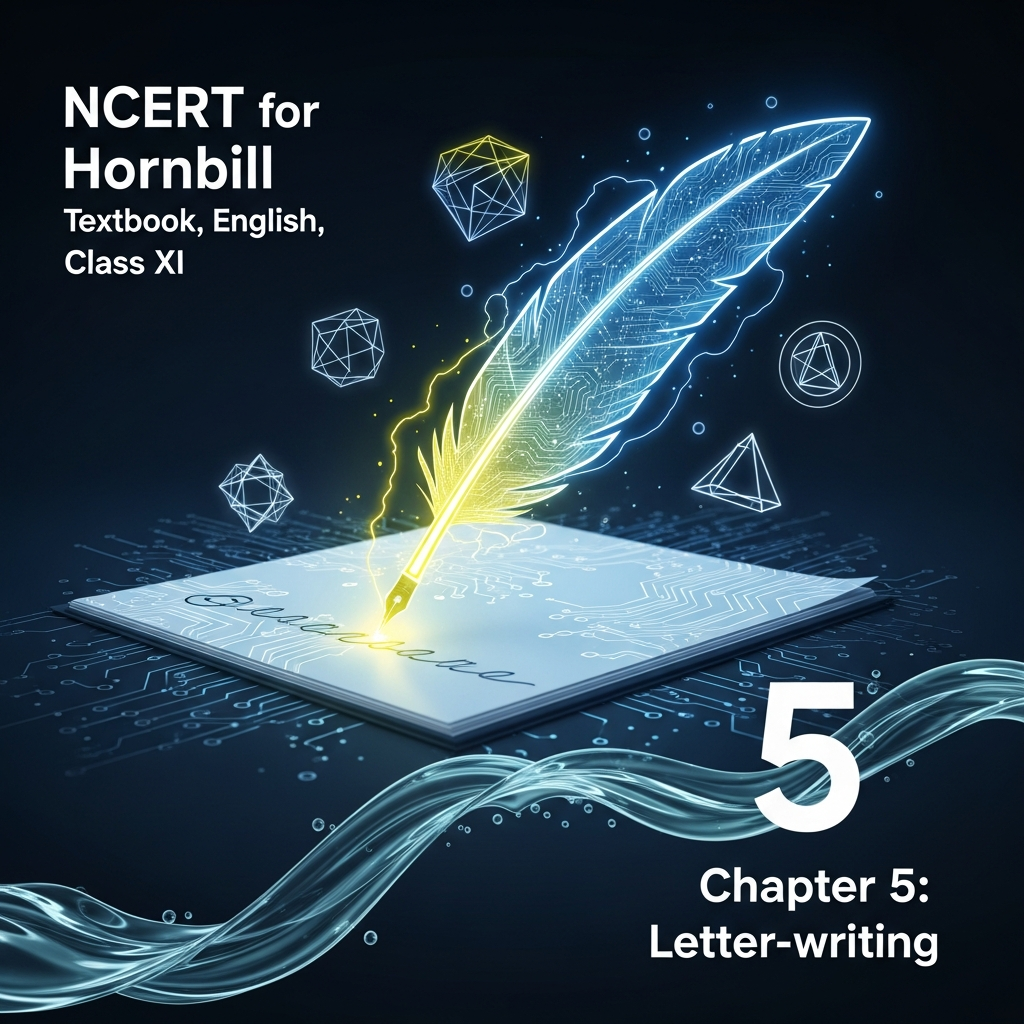
Complete Summary and Solutions for Letter-writing – NCERT Class XI English Hornbill, Chapter 5 – Writing Skill, Explanation, Questions, Answers
Detailed summary and explanation of Chapter 5 'Letter-writing' from the Hornbill English textbook for Class XI, covering the types of letters (formal and informal), structure and format of letters, essential points to keep in mind, examples of formal and informal letters, job application writing, resume preparation, and various writing exercises along with NCERT questions and answers.

Complete Summary and Solutions for Essay-writing – NCERT Class XI English Hornbill, Chapter 4 – Writing Skill, Explanation, Questions, Answers
Detailed summary and explanation of Chapter 4 'Essay-writing' from the Hornbill English textbook for Class XI, covering the process of brainstorming, structuring an essay, characteristics of a good essay, example essays like 'The Importance of Games,' passage analysis, and NCERT questions, answers, and writing exercises.
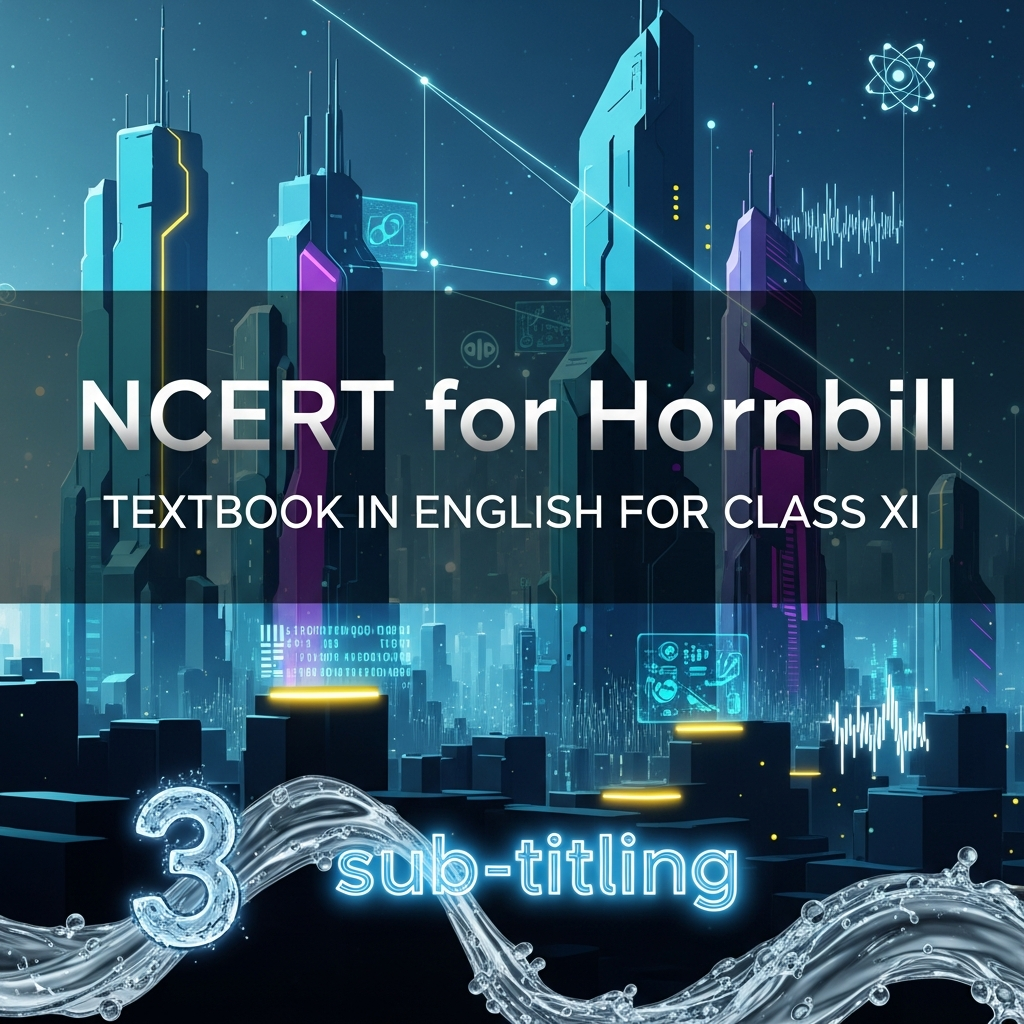
Complete Summary and Solutions for Sub-titling – NCERT Class XI English Hornbill, Chapter 3 – Writing Skill, Explanation, Questions, Answers
Detailed summary and explanation of Chapter 3 'Sub-titling' from the Hornbill English textbook for Class XI, covering the purpose of sub-titling, techniques for identifying main ideas and themes, practice with newspaper articles, and NCERT questions, answers, and exercises for writing skills.
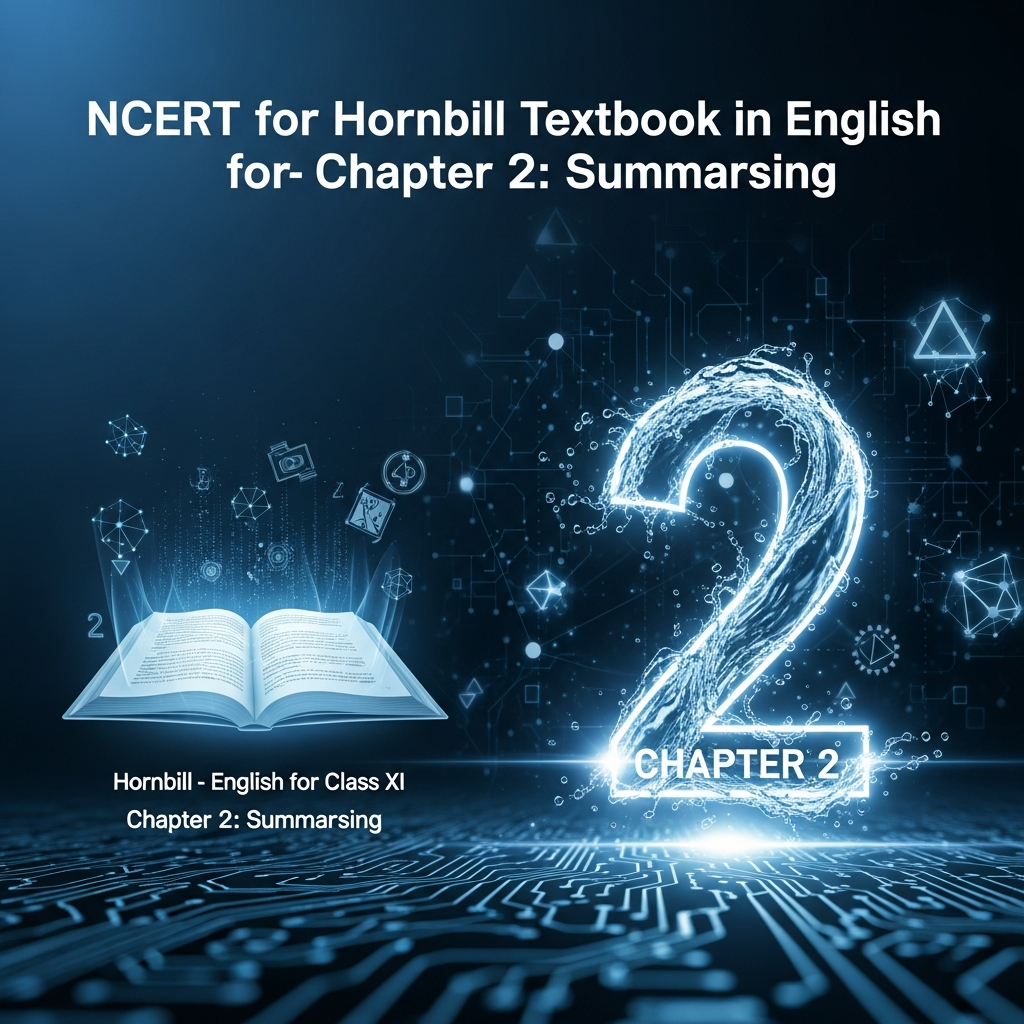
Complete Summary and Solutions for Summarising – NCERT Class XI English Hornbill, Chapter 2 – Writing Skill, Explanation, Questions, Answers
Detailed summary and explanation of Chapter 2 'Summarising' from the Hornbill English textbook for Class XI, covering the purpose and process of summarising, differences from note-making, techniques for effective summarising, example texts with stepwise reduction, and NCERT questions, answers, and writing practice exercises.

Complete Summary and Solutions for Note-making – NCERT Class XI English Hornbill, Chapter 1 – Writing Skill, Explanation, Questions, Answers
Detailed summary and explanation of Chapter 1 'Note-making' from the Hornbill English textbook for Class XI, covering the importance of note-making, steps for effective note-taking, characteristics of good notes, and practice exercises with NCERT questions, answers, and writing skills.

Complete Summary and Solutions for Bridges – NCERT Class XI English Woven Words, Essay Section, Chapter 7 – Explanation, Questions, Answers
Detailed summary and explanation of Chapter 7 'Bridges' by Kumudini Lakhia from the Woven Words English textbook essay section for Class XI (Elective Course), covering the author’s journey in dance, struggles, influences, life experiences interwoven with her art, major themes, and all NCERT questions, answers, and comprehension exercises.
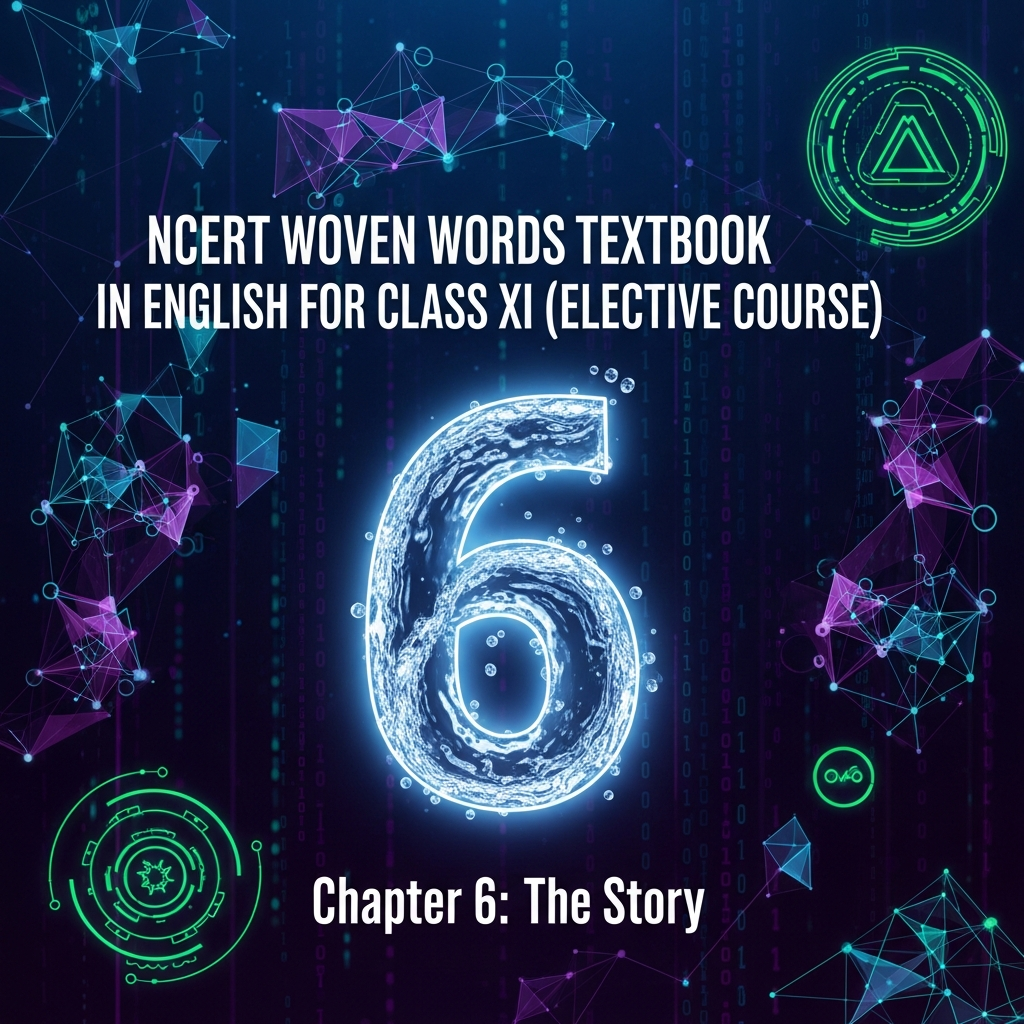
Complete Summary and Solutions for The Story – NCERT Class XI English Woven Words, Essay Section, Chapter 6 – Explanation, Questions, Answers
Detailed summary and explanation of Chapter 6 'The Story' by E.M. Forster from the Woven Words English textbook essay section for Class XI (Elective Course), discussing the fundamental role of storytelling in novels, the importance of narrative time, and literary devices used to enhance the story, along with all NCERT questions, answers, and comprehension exercises.
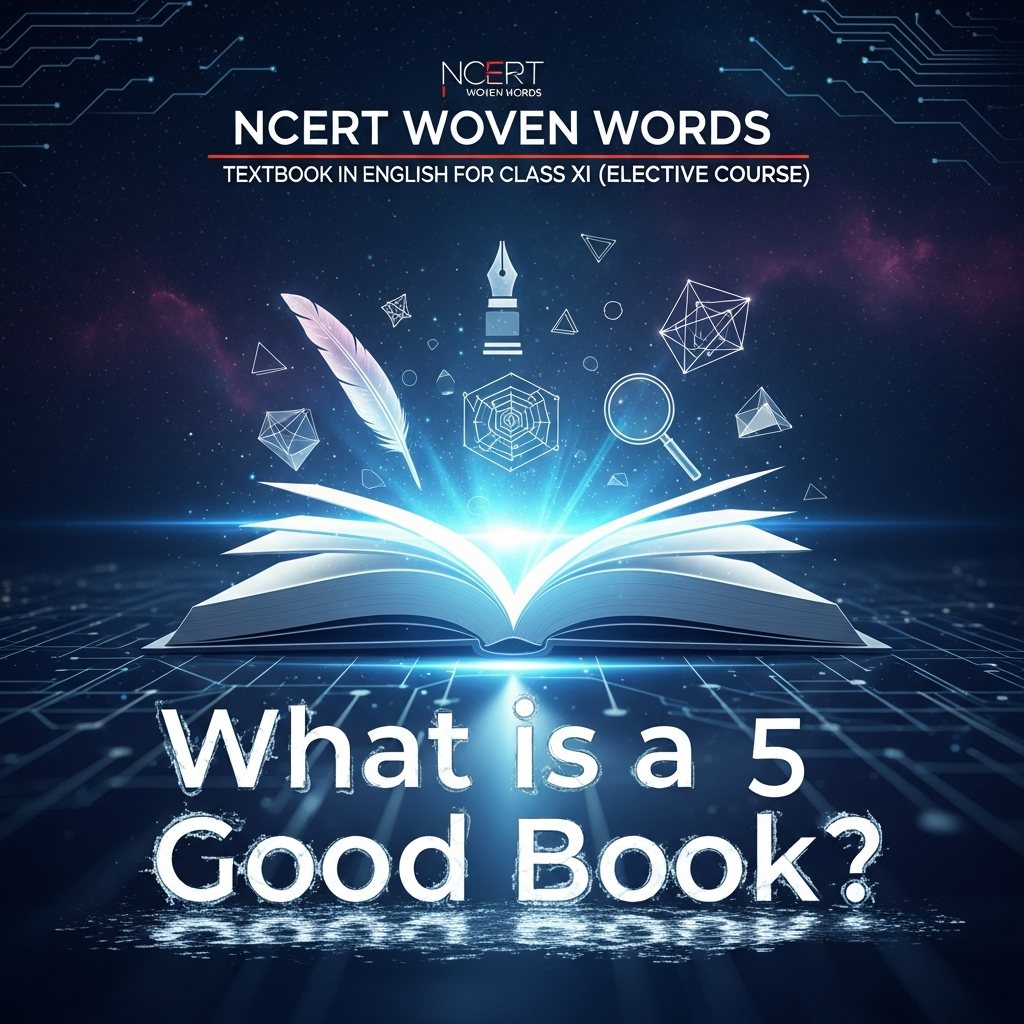
Complete Summary and Solutions for What is a Good Book? – NCERT Class XI English Woven Words, Essay Section, Chapter 5 – Explanation, Questions, Answers
Detailed summary and explanation of Chapter 5 'What is a Good Book?' by John Ruskin from the Woven Words English textbook essay section for Class XI (Elective Course), discussing the essence of a true book, the value of written permanence over spoken words, the importance of accuracy in reading, and the qualities required to appreciate great literature—with all NCERT questions, answers, and comprehension exercises.
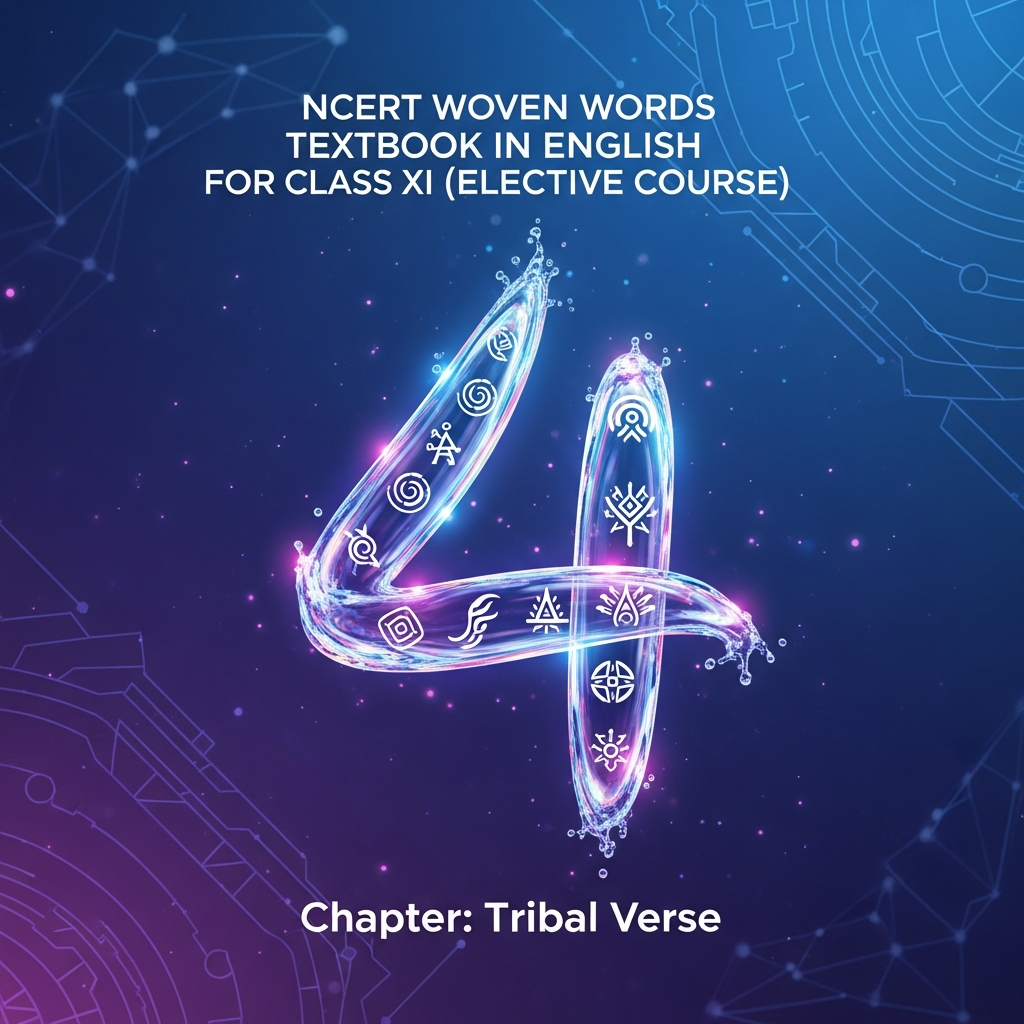
Complete Summary and Solutions for Tribal Verse – NCERT Class XI English Woven Words, Essay Section, Chapter 4 – Explanation, Questions, Answers
Detailed summary and explanation of Chapter 4 'Tribal Verse' by G.N. Devy from the Woven Words English textbook essay section for Class XI (Elective Course), covering tribal oral literature, cultural context, themes, and significance—along with all NCERT questions, answers, and comprehension exercises.
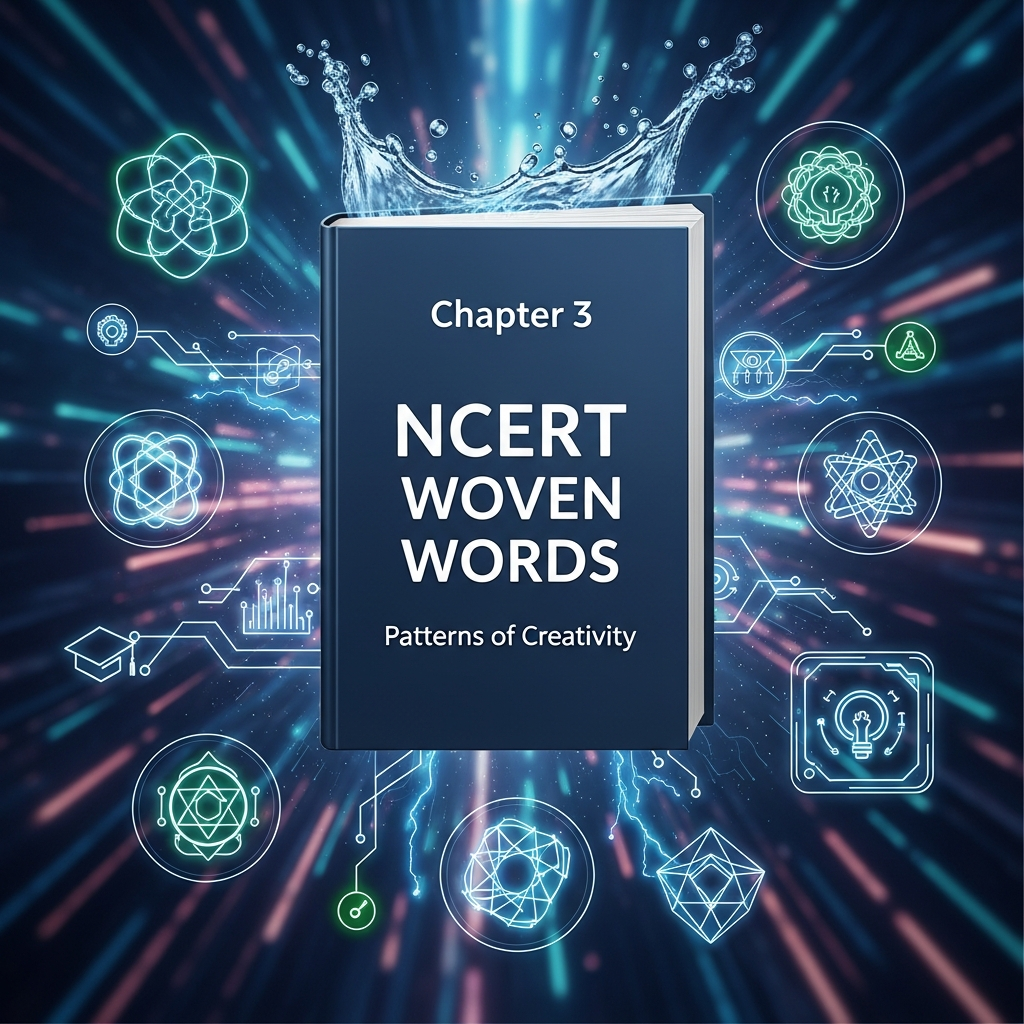
Complete Summary and Solutions for Patterns of Creativity – NCERT Class XI English Woven Words, Essay Section, Chapter 3 – Explanation, Questions, Answers
Detailed summary and explanation of Chapter 3 'Patterns of Creativity' by S. Chandrasekhar from the Woven Words English textbook essay section for Class XI (Elective Course), covering the intersection of science and poetry, creativity in arts and sciences, and critical reflections on notable figures—with all NCERT questions, answers, and exercises for comprehension.
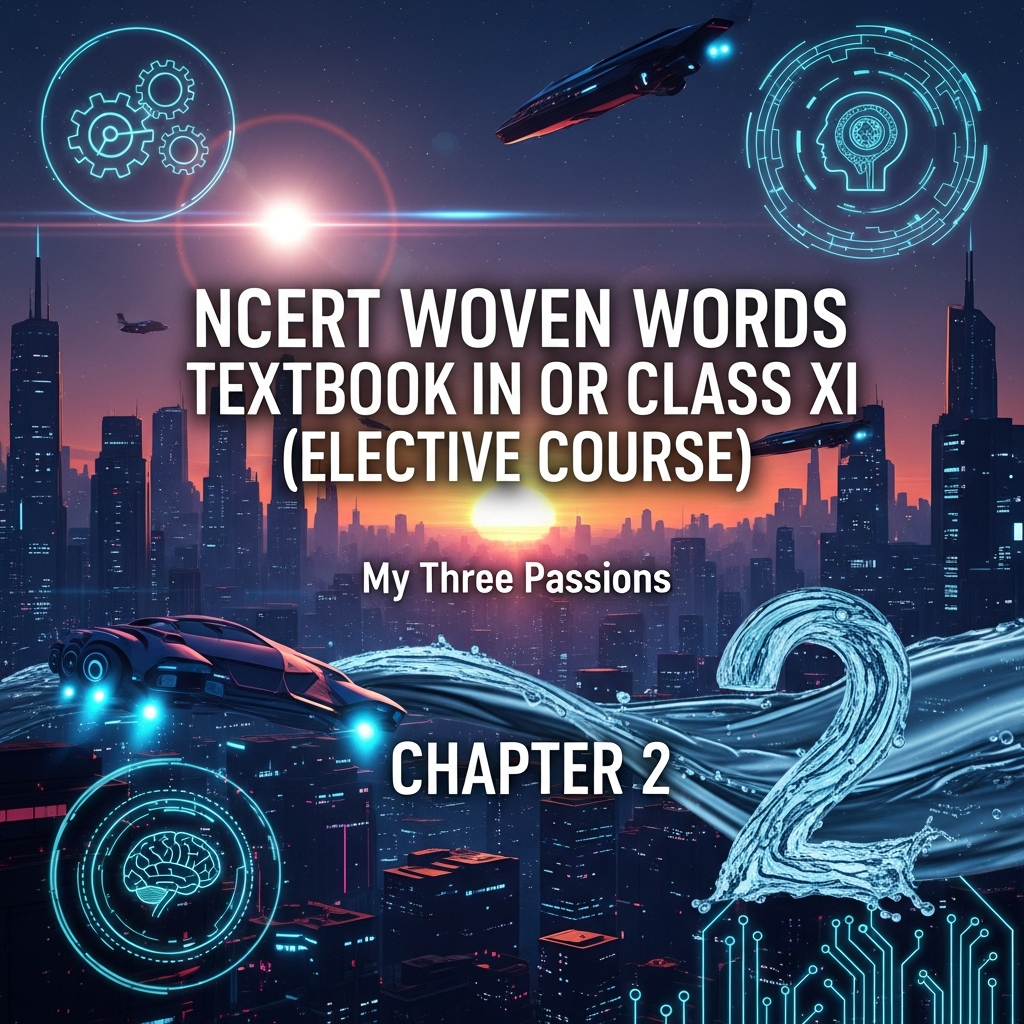
Complete Summary and Solutions for My Three Passions – NCERT Class XI English Woven Words, Essay Section, Chapter 2 – Explanation, Analysis, Questions, Answers
Detailed summary and explanation of Chapter 2 'My Three Passions' by Bertrand Russell from the Woven Words English textbook essay section for Class XI (Elective Course), covering themes of love, knowledge, pity, and their impact on life with all NCERT questions, answers, and comprehension exercises.
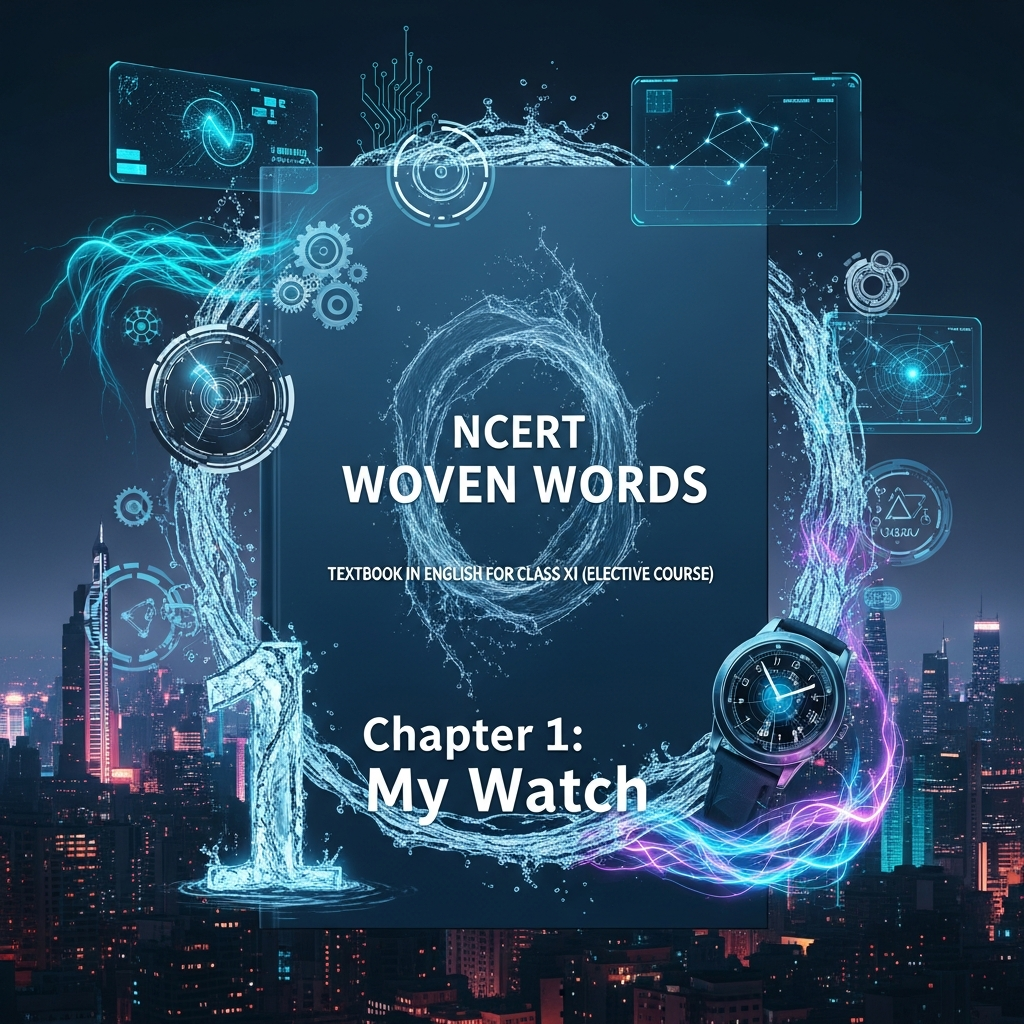
Complete Summary and Solutions for My Watch – NCERT Class XI English Woven Words, Essay Section, Chapter 1 – Explanation, Analysis, Questions, Answers
Detailed summary and explanation of Chapter 1 'My Watch' by Mark Twain from the Woven Words English textbook essay section for Class XI (Elective Course), including humor, themes, narrative style, and all NCERT questions, answers, and comprehension exercises.

Alerts and Updates for GATE Engineering Sciences
Stay up-to-date with the latest news and updates for the GATE Engineering Sciences exam
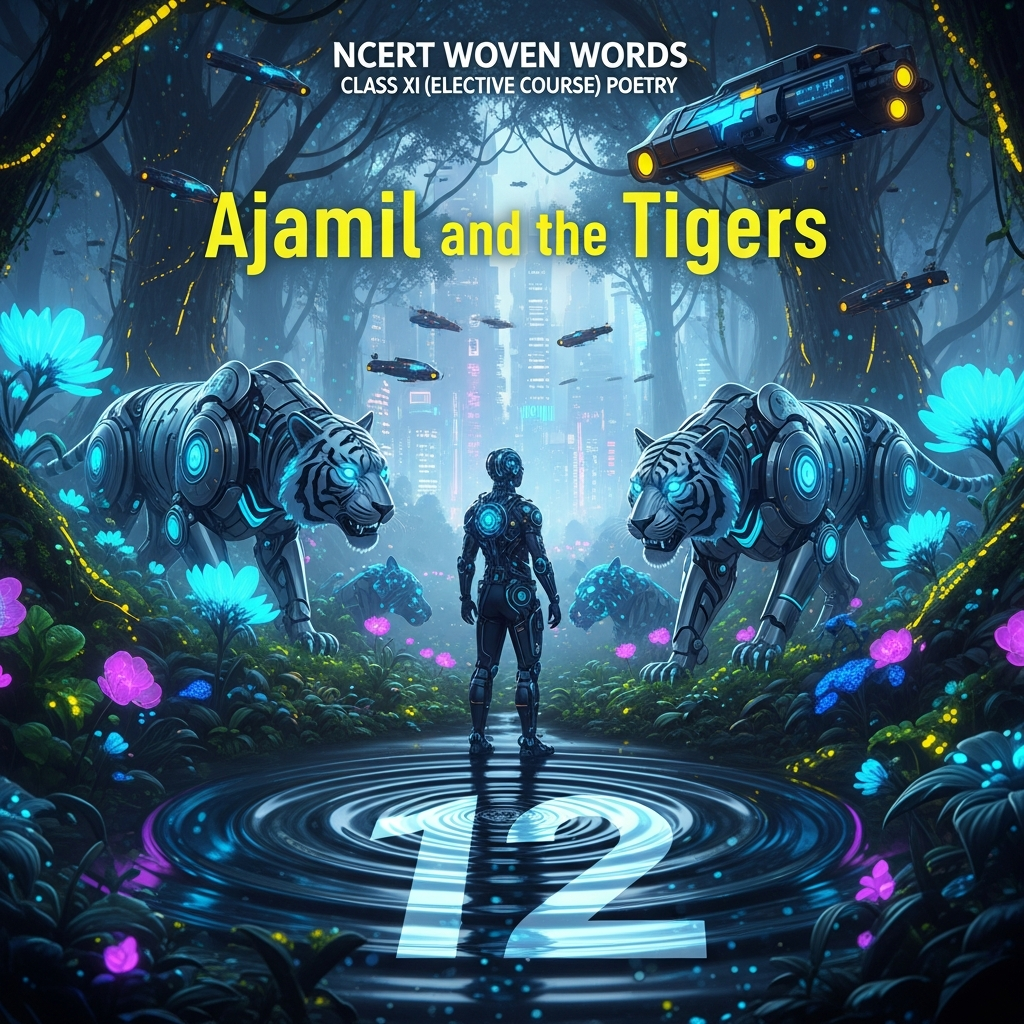
Complete Summary and Solutions for Ajamil and the Tigers – NCERT Class XI English Woven Words, Poetry Section, Chapter 12 – Explanation, Questions, Answers
Detailed summary and explanation of Chapter 12 'Ajamil and the Tigers' from the Woven Words English textbook poetry section for Class XI (Elective Course), covering poem interpretation, themes, satire, and all NCERT questions, answers, and exercises for comprehension.
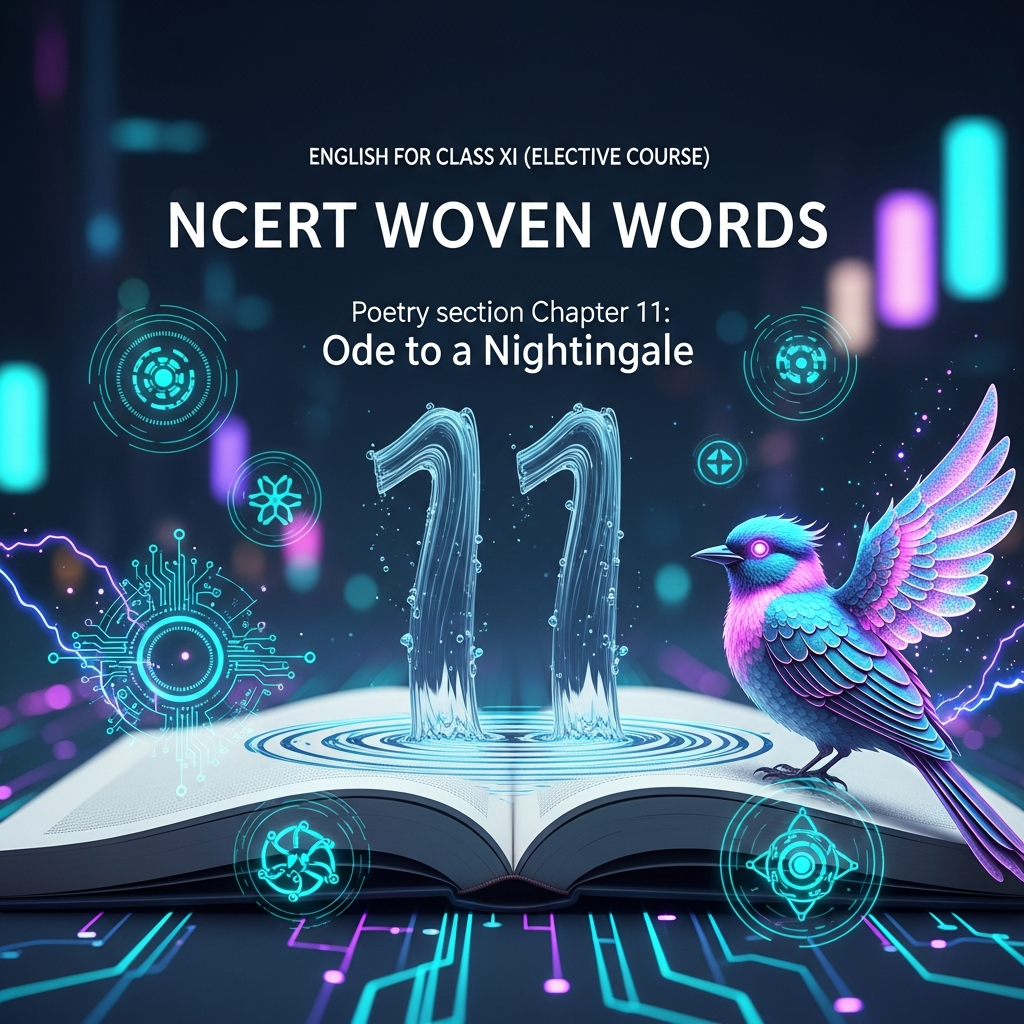
Complete Summary and Solutions for Ode to a Nightingale – NCERT Class XI English Woven Words, Poetry Section, Chapter 11 – Explanation, Questions, Answers
Detailed summary and explanation of Chapter 11 'Ode to a Nightingale' from the Woven Words English textbook poetry section for Class XI (Elective Course), covering poem interpretation, themes, poetic devices, and all NCERT questions, answers, and exercises for comprehension.
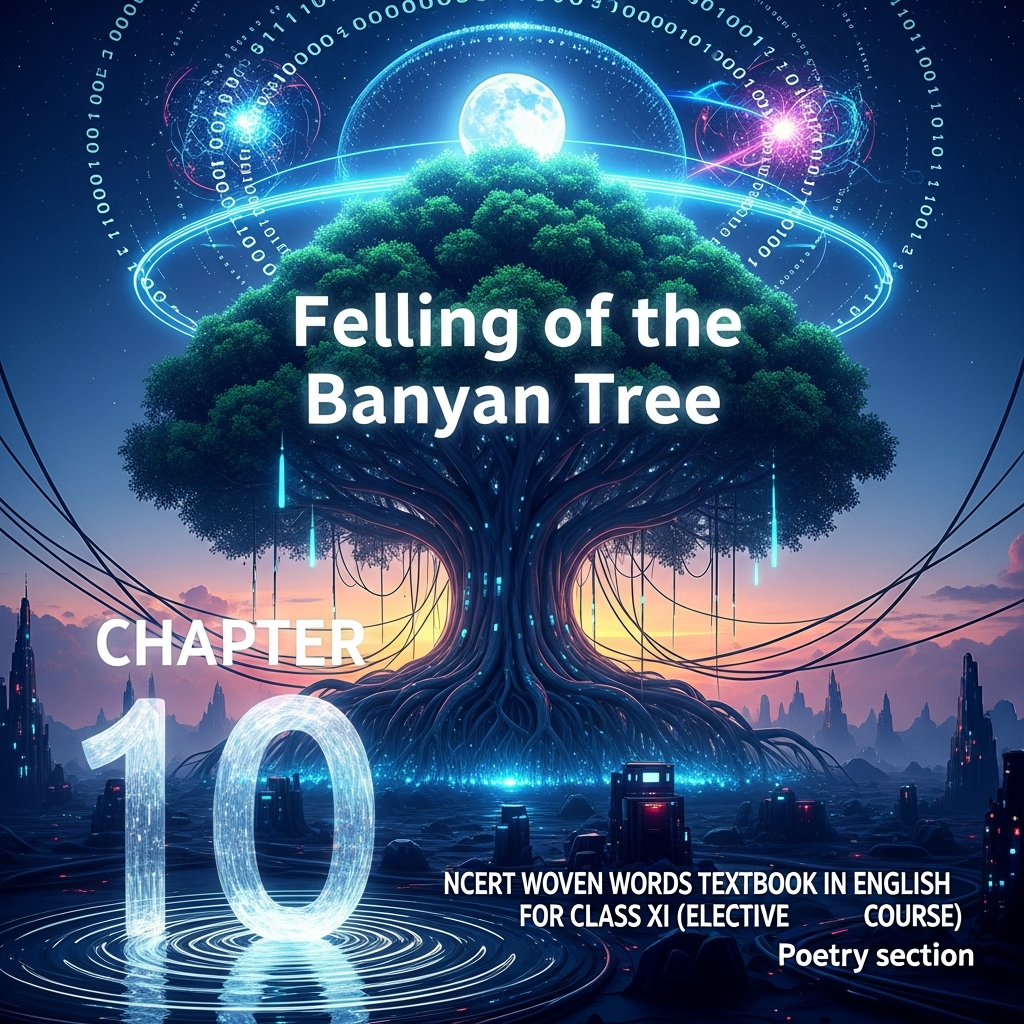
Complete Summary and Solutions for Felling of the Banyan Tree – Woven Words Class XI English (Elective), Poetry Chapter 10 – Explanation, Questions, Answers
Detailed summary and explanation of Chapter 10 ‘Felling of the Banyan Tree’ from the Woven Words English Elective textbook for Class XI, covering the poem’s meaning, themes, symbolism, imagery, and complete NCERT questions, answers, and exercises.

Complete Summary and Solutions for Refugee Blues – Woven Words NCERT Class XI English Elective, Chapter 9 – Summary, Explanation, Questions, Answers
A poignant poem by Wystan Hugh Auden addressing the plight of refugees, discrimination, and loss of homeland. Using the ballad form, the poem contrasts the freedom in nature with human suffering and societal rejection. It includes detailed NCERT questions, answers, and exercises for Class XI

Complete Summary and Solutions for For Elkana – Woven Words Class XI English (Elective), Poetry Chapter 8 – Explanation, Questions, Answers
Detailed summary and explanation of Chapter 8 ‘For Elkana’ from the Woven Words English Elective textbook for Class XI, covering the poem’s meaning, themes, tone, humour, narrative style, and complete answers to all NCERT questions and exercises.

Complete Summary and Solutions for Hawk Roosting – Woven Words Class XI English (Elective), Poetry Chapter 7 – Explanation, Analysis, Questions, Answers
Detailed explanation and summary of Chapter 7 ‘Hawk Roosting’ from the Woven Words English Elective textbook for Class XI, including poetic analysis, themes, literary devices, interpretation, and complete solutions to all NCERT questions and exercises.

Complete Summary and Solutions for Mother Tongue – Woven Words NCERT Class XI English Elective, Chapter 6 – Summary, Explanation, Questions, Answers
A poignant poem by Padma Sachdev about the emotional connection to her mother tongue Dogri. The poem explores themes of language, identity, and cultural heritage, highlighting the loss of the original script Sharade and the poet's deep attachment to her native language

Complete Summary and Solutions for The World is too Much With Us – Woven Words NCERT Class XI English Elective, Chapter 5 – Summary, Explanation, Questions, Answers
A sonnet by William Wordsworth expressing concern about humanity’s disconnection from nature due to industrialization and materialism. The poem features mythological references to Proteus and Triton, conveying themes of loss, nature’s beauty, and a yearning for a simpler, more connected existence. This chapter includes detailed NCERT questions, answers, and exercises for Class XI
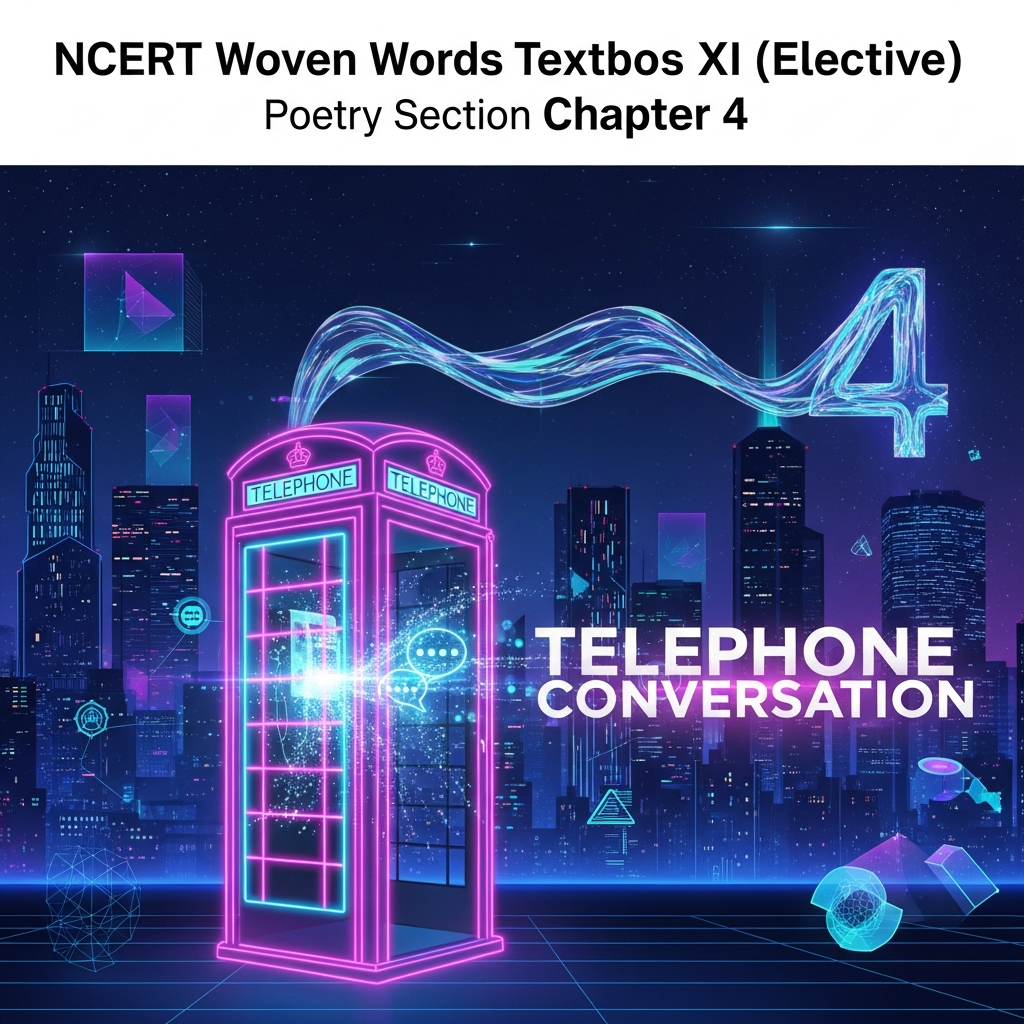
Complete Summary and Solutions for Telephone Conversation – Woven Words NCERT Class XI English Elective, Chapter 4 – Summary, Explanation, Questions, Answers
A powerful poem by Wole Soyinka that deals with race and racism through a telephone conversation between a Black man and a white landlady. The poem uses vivid imagery and sharp dialogue to portray racial prejudice and social irony. It contains thoughtful NCERT questions, answers, and exercises for Class XI
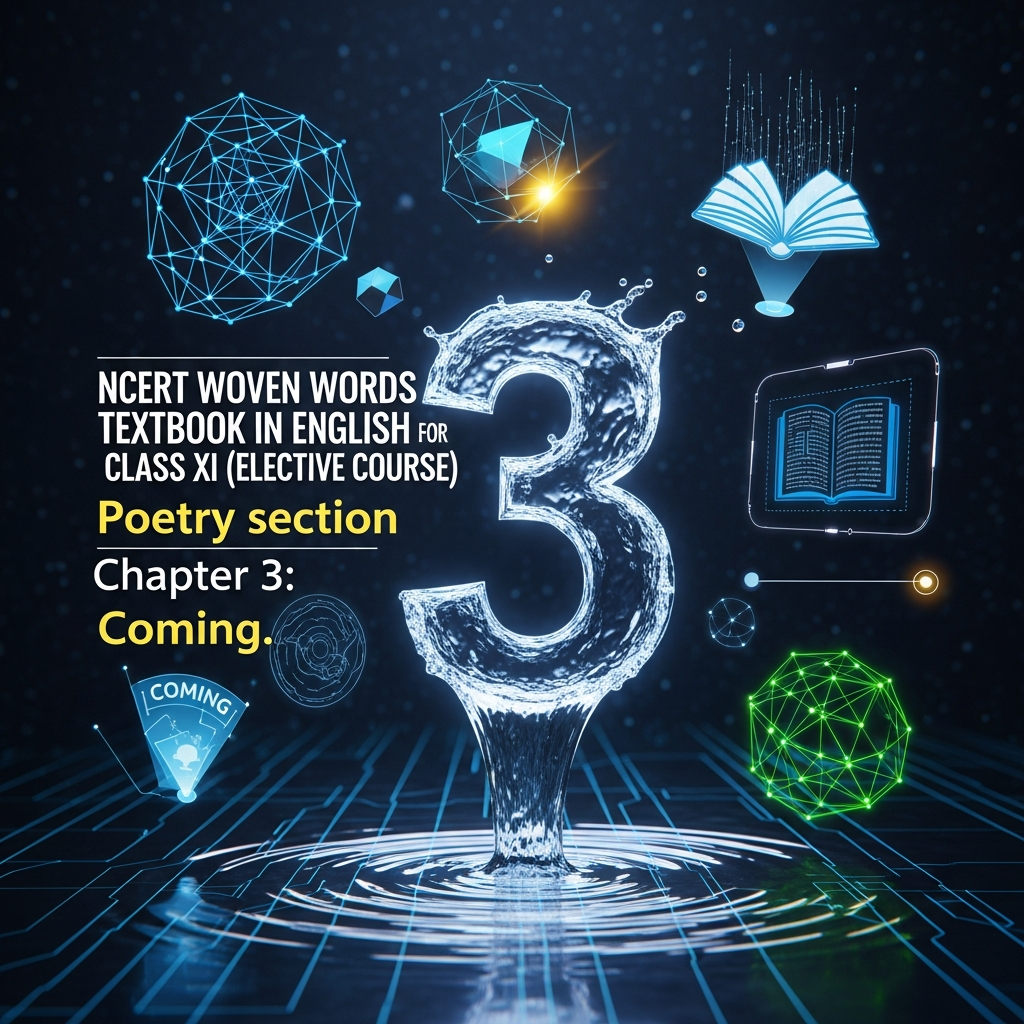
Complete Summary and Solutions for Coming – Woven Words NCERT Class XI English Elective, Chapter 3 – Summary, Explanation, Questions, Answers
A poem by Philip Larkin that evokes the coming of spring through vivid imagery of longer evenings, the singing of a thrush, and the renewal of life. Themes include change, childhood memories, and the blend of nature with human emotion. The chapter includes all NCERT questions, answers, and exercises for Class XI.

Complete Summary and Solutions for Let Me Not to the Marriage of True Minds – Woven Words NCERT Class XI English Elective, Chapter 2 – Summary, Explanation, Questions, Answers
A Shakespearean sonnet by William Shakespeare that portrays true love as unchanging and steadfast despite any obstacles or alterations. The poem explores themes of constancy, love’s permanence, and time’s inability to diminish true affection. It includes detailed NCERT questions, answers, and exercises for Class XI
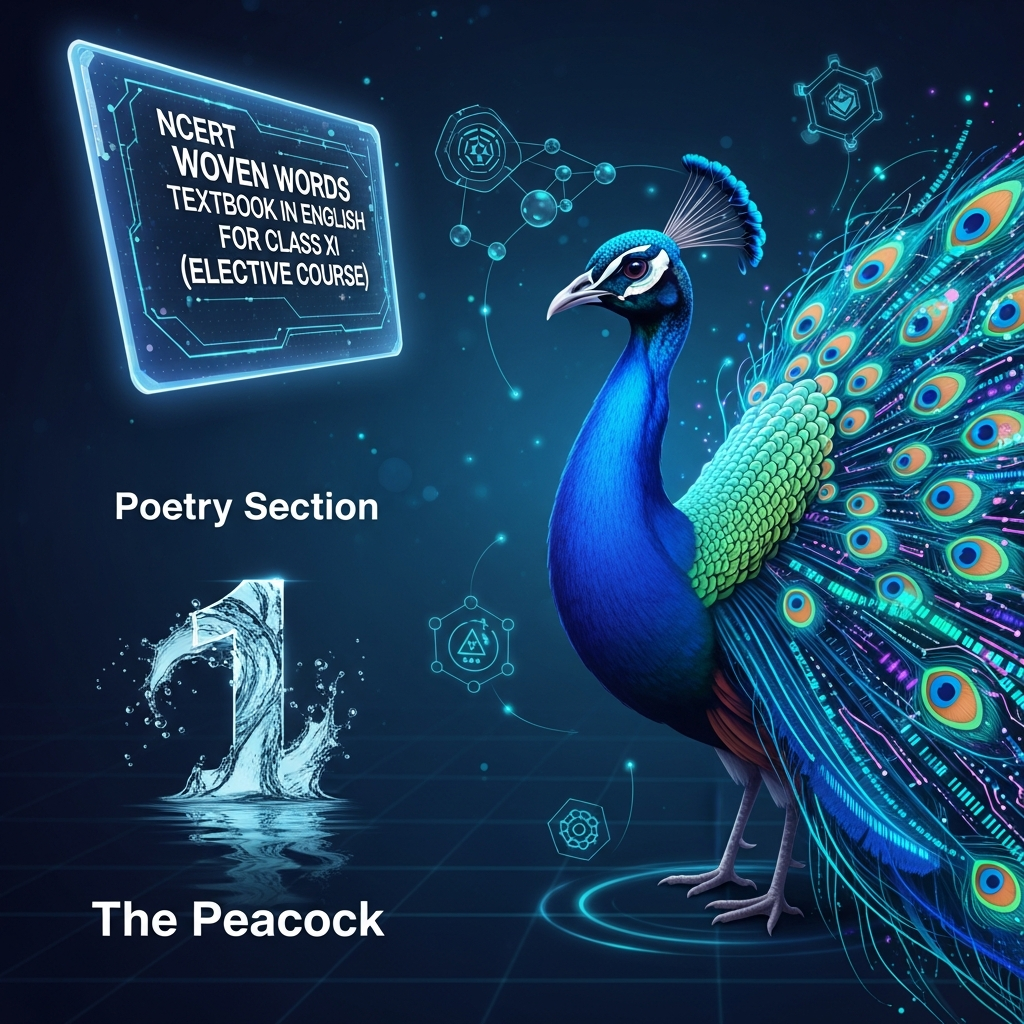
Complete Summary and Solutions for The Peacock – Woven Words NCERT Class XI English Elective, Chapter 1 – Summary, Explanation, Questions, Answers
A beautifully vivid poem by Sujata Bhatt that captures the elusive image and vibrant colors of the peacock through rich sensory details and metaphorical language. The poem explores themes of nature, attention, and perception. It includes detailed NCERT questions, answers, and exercises for Class XI.
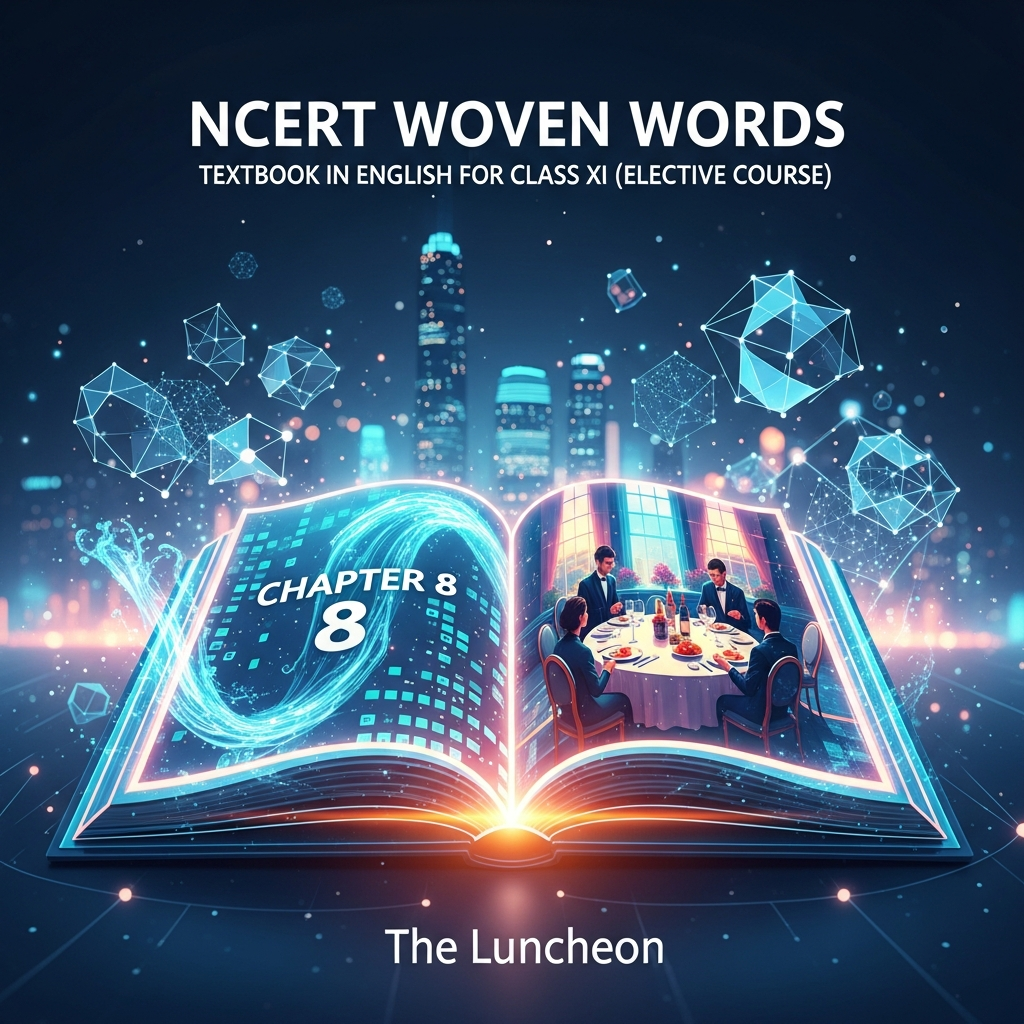
Complete Summary and Solutions for The Luncheon – Woven Words NCERT Class XI English Elective, Chapter 8 – Summary, Explanation, Questions, Answers
A humorous and satirical story by W. Somerset Maugham about a young man taken for a ride by a pretentious woman who orders expensive food on a small budget. This narrative highlights human foibles, social class dynamics, and the quirks of human nature. Contains all NCERT questions, answers, and exercises for Class XI.
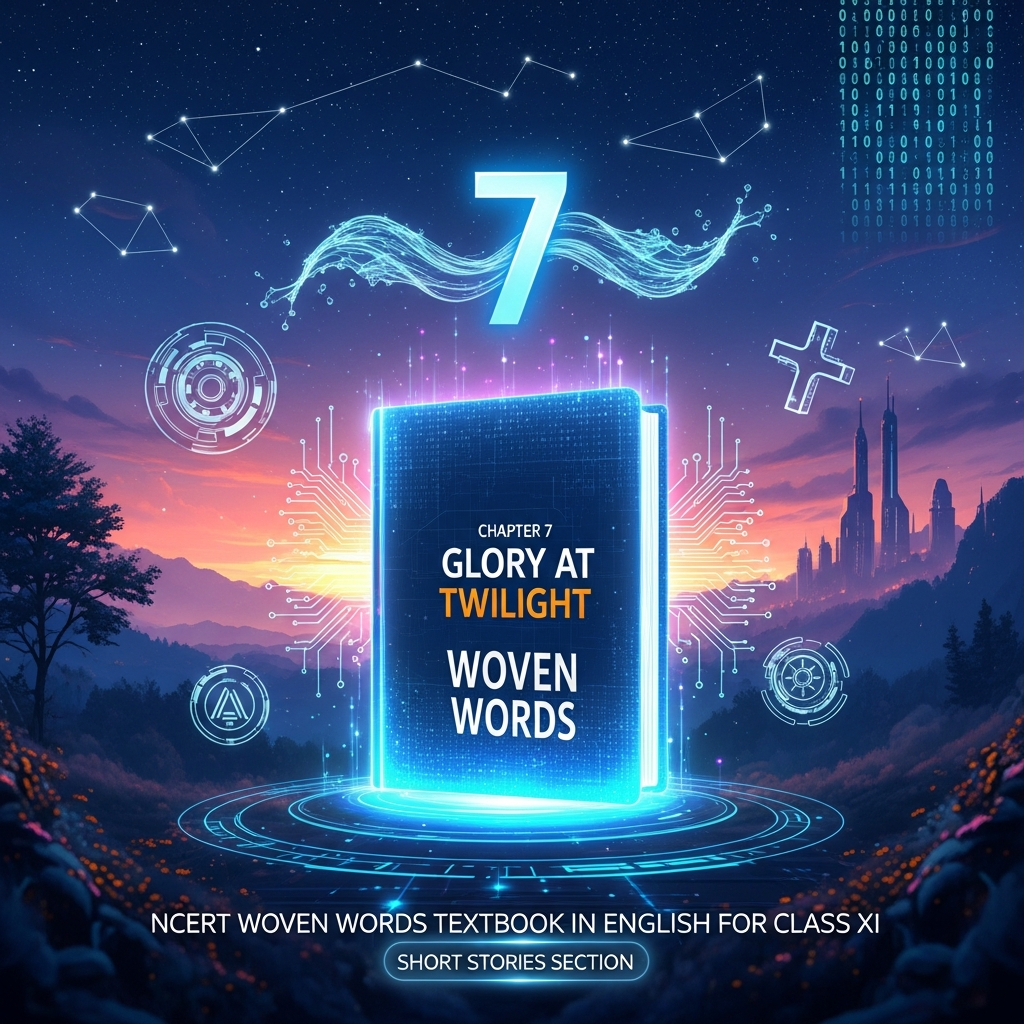
Complete Summary and Solutions for Glory at Twilight – Woven Words NCERT Class XI English Elective, Chapter 7 – Summary, Explanation, Questions, Answers
A poignant story by Bhabani Bhattacharya capturing the rise and fall of Satyajit, whose financial success leads to ruin and deep reflection on failure, pride, and social relations. The narrative touches on themes of dignity, crisis, and the cultural fabric of village life. Includes detailed NCERT questions, answers, and exercises for Class XI.
